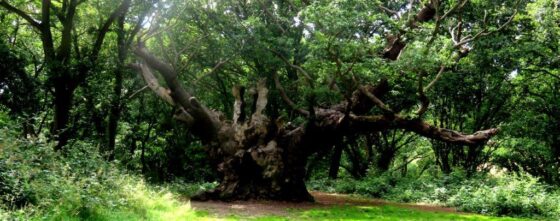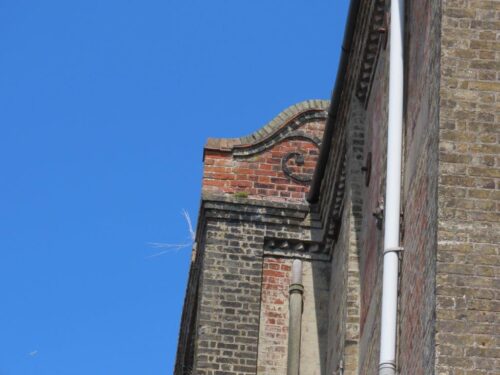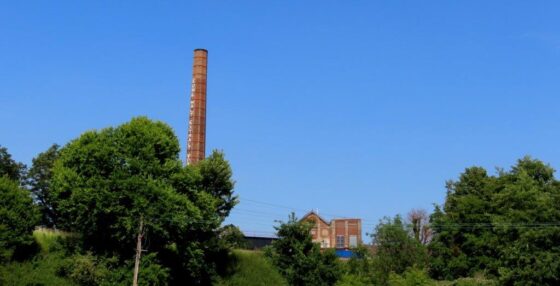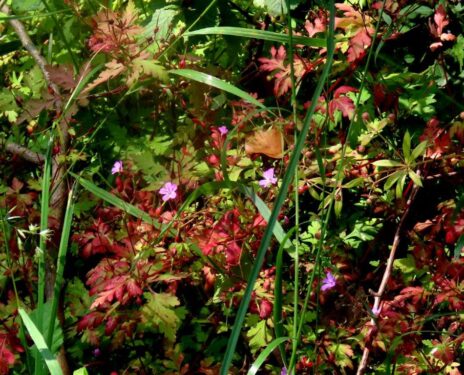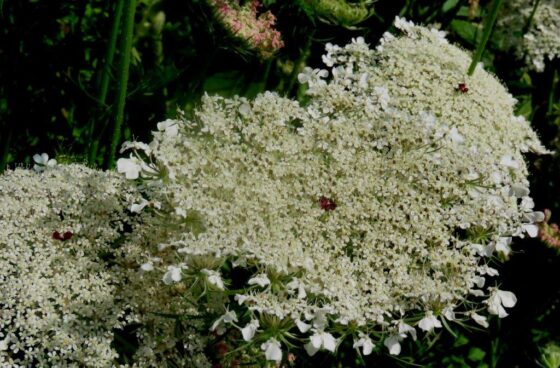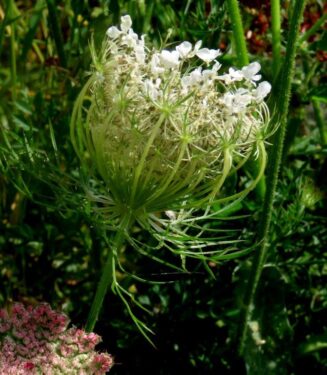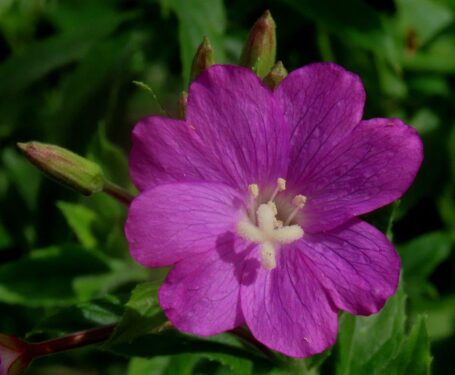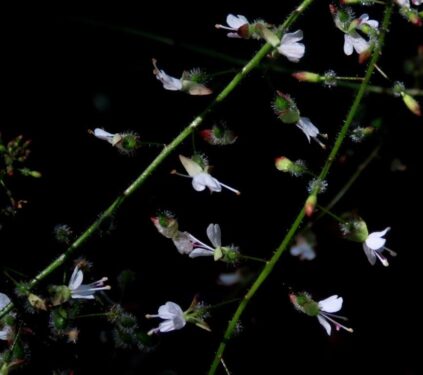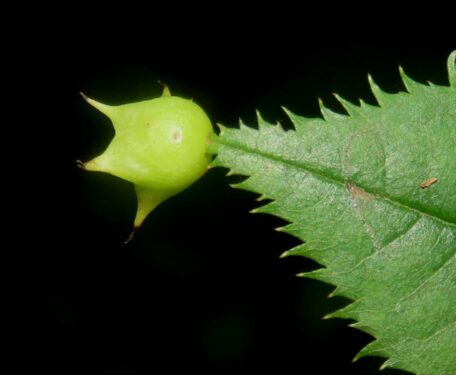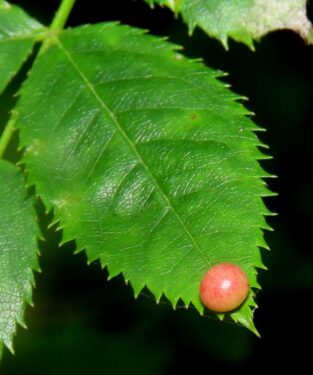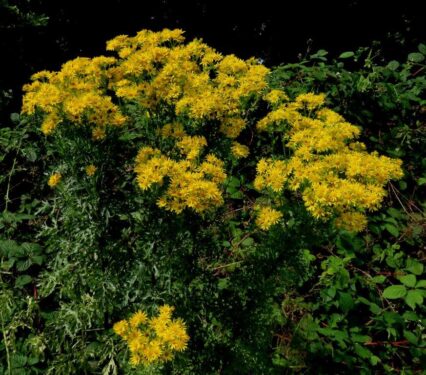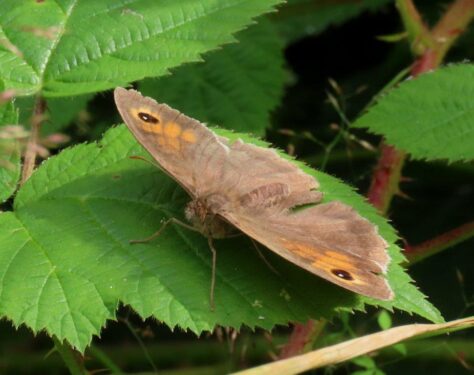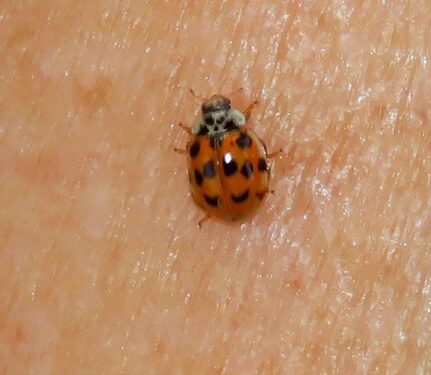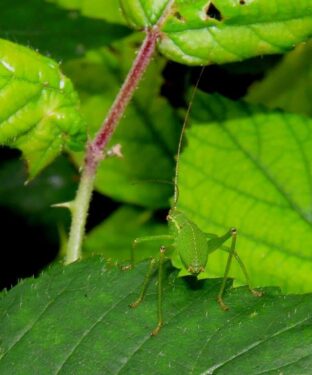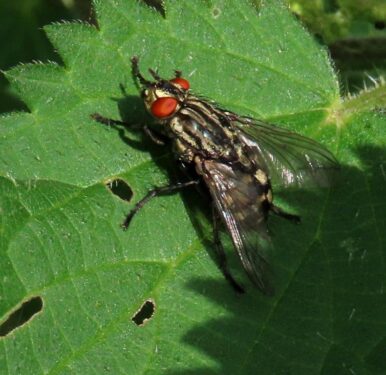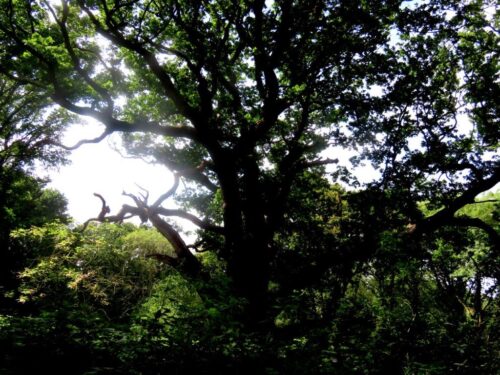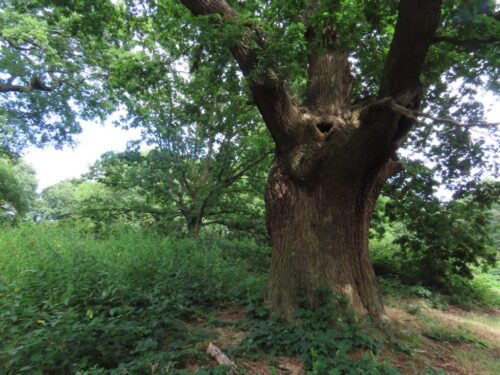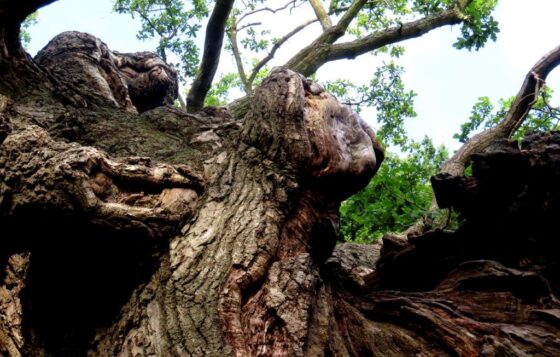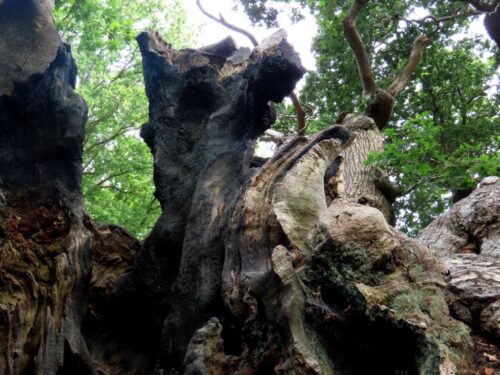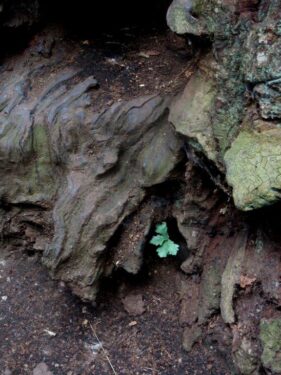Wow! A warm summer’s day – what a lovely change – and enjoyed by our group on our Wild Essex walk in Mistley. Our journey took us through the Edme Malt works, where we admired some of the intricate decoration of these functional buildings, under the railway line and on through a cow field where the residents were curious but friendly.
A walk along a rather attractive footpath reminiscent of a holloway where the tree canopies meet was a cool place to wander out of the sun’s glare and admire some of the wild flowers, Cuckoo Pint, Herb Robert and Hogweed to name but three.
Of course Chris took the opportunity to talk about the characteristics used in his new flower identification guide such as the ‘false insect’ and branched bracts of Wild Carrot, the four-lobed stigma of Great Willowherb and the uniquely two-petalled Enchanter’s-nightshade.
A few galls were spotted including two very different ones on Dog Rose: smooth pea-gall and spiked pea-gall. A complex, confusing and confused pair, the spiked version belongs to the gall-wasp Diplolepis nervosa though the smooth one could be caused either by D. nervosa or the closely related D. eglanteriae. In this form, the two species are indistinguishable.
At the top of the lane we continued on to the edges of the local amenity field, past the ‘Secret Bunker’ and rather interesting Passive houses. Here there were more stands of wild flowers (including Ragwort, but without stripy Cinnabar caterpillars) and a number of butterflies seen. Sadly numbers of these insects seems to be quite low this year, at least so far, though by the end of the afternoon we had spotted seven species – Red Admiral, Holly Blue, Comma, Large White, Gatekeeper, Meadow Brown and Large Skipper.
Just a few other insects attracted our attention including a 10-spot Ladybird, a flesh-fly and and a nymph Speckled Bush-cricket.
And on to the main event – through the wood that clothes the flanks of Furze Hill we admired a number of old oak trees, many of which showing signs of pollarding down the ages resulting in interesting branch formations.
At last we reached Old Knobbley Himself. Well-named, this 800 (at least) year-old tree is covered in nobbles and lumps – some caused by bacterial infections and galls – but despite its vast age, this charmer still looks pretty fab and very much alive with upper branches sprouting leaves with gay abandon. It is such a tactile beast we all spent time stroking and patting the trunk, and spent time imagining what some of the limbs might represent – two elephants, a moose, a stag?
And as we walked round his girth, is it possible the enveloping folds of root and bark were nursing the oaklet that will eventually replace its esteemed forebear?
And so it was time to turn back to ensure we reached our trains punctually. A little walk along School Lane brought us back to the station and it was time to say our farewells. Thank you to all who came along, and to everyone who supports our Wild Essex venture. Hope to see you all again soon.
